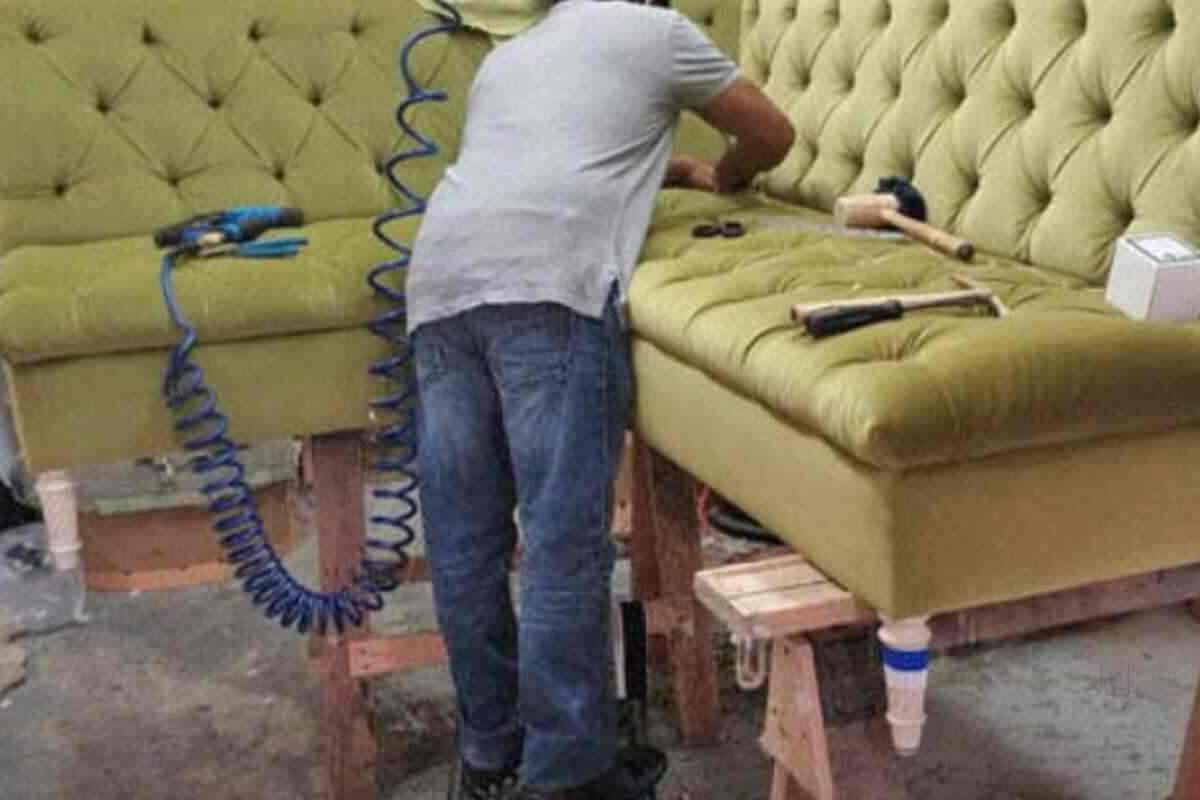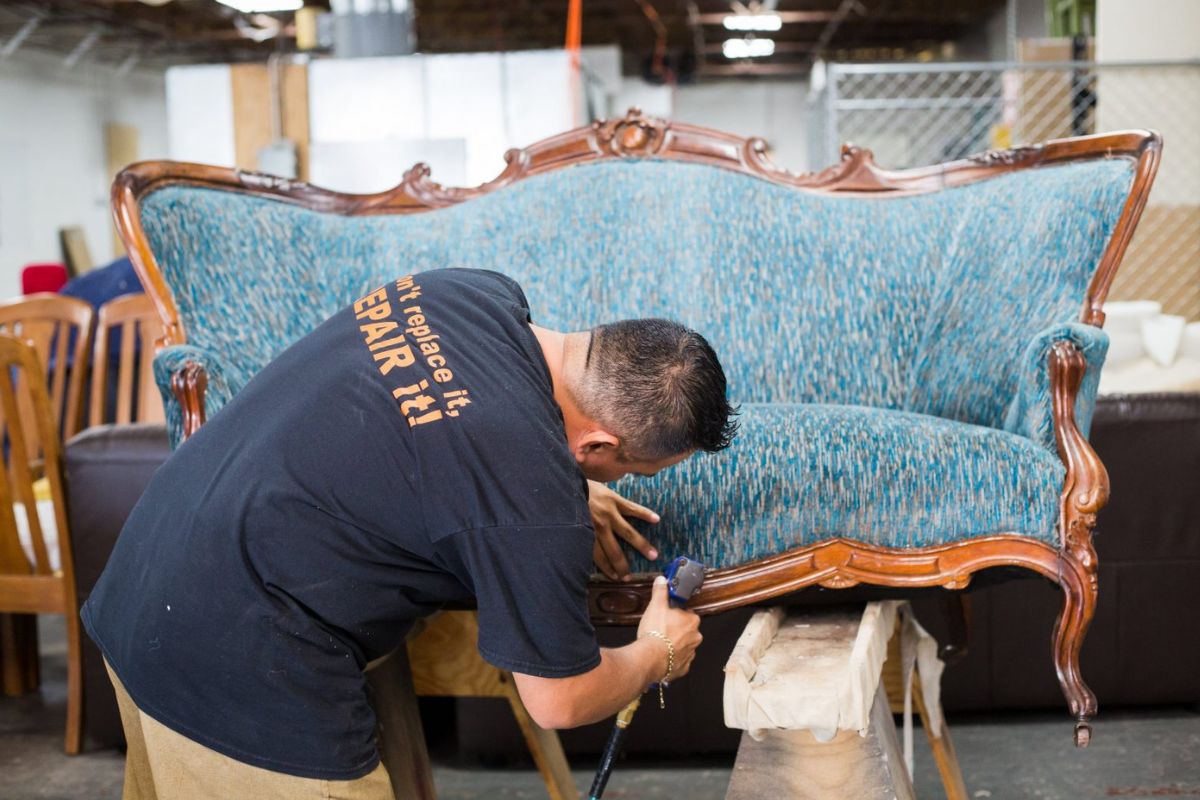
Furniture can be a big investment, and when a sofa starts showing signs of wear—whether it’s sagging cushions, frayed fabric, or wobbly legs—replacing it might seem like the only option. However, sofa repair offers a cost-effective solution that can bring your beloved piece back to life without the expense of buying new furniture. Repairing a sofa not only saves you money but also lets you customize your furniture to better fit your style or needs. In this guide, we’ll explore the many ways sofa repair can extend the life of your furniture, making it a smart and sustainable choice for any homeowner.
Understanding Common Sofa Issues
Sofas are prone to a variety of issues over time, making them less comfortable and visually appealing. Common problems include sagging cushions, where the filling becomes compressed, leading to an uncomfortable sitting experience. Upholstery can fray or stain, detracting from the overall look. Wooden frames may weaken, causing squeaks or instability. Additionally, loose legs can result in wobbling, making the sofa unsafe to use. Identifying these issues early is crucial; while they can be annoying, most can be repaired effectively, allowing you to maintain your furniture’s comfort and style without the need for a costly replacement.
The Cost of Replacement vs. Repair
When faced with a worn-out sofa, homeowners often consider replacement, which can be a significant financial burden. The average cost of a new sofa ranges from $800 to several thousand dollars, depending on the brand and materials. In contrast, simple repairs can often be done for a fraction of the cost—reupholstering can range from $300 to $1,000, and structural repairs may cost less than $200. By weighing these options, it becomes clear that investing in repairs can save you hundreds or even thousands of dollars, making it a smart financial choice.
Benefits of Repairing Over Replacement
Repairing your sofa offers numerous benefits beyond just cost savings. Sentimental value often accompanies furniture, and repairing allows you to keep a cherished piece while restoring its functionality and appearance. Additionally, many older sofas are crafted from high-quality materials that are difficult to replicate in newer models. Repairing these pieces ensures you maintain their unique charm and craftsmanship. By choosing to repair, you also extend the life of your furniture, promoting sustainability and reducing waste, which aligns with eco-friendly values that are increasingly important in today’s world.
DIY vs. Professional Repair Options
Deciding between DIY repairs and hiring professionals can be challenging. For minor issues like reupholstering cushions or tightening screws, DIY can be a rewarding and cost-effective option, especially for those with a knack for home improvement. Various tutorials and resources are available to guide you through simple fixes. However, more complex repairs, such as structural work or extensive reupholstering, often require the expertise of professionals to ensure safety and quality. It’s essential to assess your skills and the severity of the damage before choosing the best approach, balancing time, cost, and desired outcomes.
Customization Through Repair
One of the most exciting aspects of repairing a sofa is the opportunity for customization. When you opt for a repair, you can choose new upholstery that better reflects your personal style or complements your home decor. From vibrant colors to unique patterns, the options are nearly endless. Additionally, you can modify features like cushion firmness or add decorative elements such as piping or buttons, giving your sofa a fresh, tailored look. This level of customization not only revitalizes your furniture but also enhances your living space, ensuring that it remains a perfect fit for your aesthetic preferences.
Preventative Maintenance Tips
Preventative maintenance is key to prolonging the life of your sofa and reducing the need for repairs. Regular vacuuming helps remove dirt and debris that can wear down fabric over time. For spills, immediately blotting with a clean cloth can prevent staining. Consider using fabric protectors to shield against stains and wear, and rotate cushions periodically to ensure even use and reduce sagging. Additionally, placing the sofa away from direct sunlight can prevent fading. By implementing these simple maintenance practices, you can keep your sofa looking and feeling its best for years to come.
The Environmental Benefits of Repair
Choosing to repair your sofa instead of replacing it significantly benefits the environment. Furniture waste contributes to landfills, where it can take years to decompose. By opting for repair, you reduce this waste and promote a culture of sustainability. Moreover, many sofas are made from materials that have a high environmental impact during production. Repairing extends the life of these products, thereby decreasing the demand for new manufacturing and its associated carbon footprint. This eco-friendly choice not only conserves resources but also aligns with the growing trend of responsible consumption that prioritizes sustainability.
Case Studies or Testimonials
Real-life examples highlight the effectiveness of sofa repair and its cost-saving benefits. Take Sarah, who faced the dilemma of a sagging couch that she loved. Instead of buying new, she spent $300 to have the cushions replaced and the upholstery refreshed. The result was a revitalized sofa that fit perfectly with her decor and budget. Another homeowner, Mark, had a family heirloom sofa with a wobbly frame. After investing $150 in structural repairs, he preserved a cherished piece of family history while saving money. These stories illustrate how sofa repair can bring satisfaction and savings to homeowners.
When to Consider Replacement
While many issues can be repaired, some situations may warrant a complete replacement. If the sofa has extensive damage, such as a broken frame, serious structural issues, or significant mold growth, it might be time to consider a new piece. Additionally, if the sofa is outdated or no longer meets your needs, such as size or style preferences, replacement could be a better option. It’s also essential to evaluate how much money you’re willing to invest in repairs versus the cost of a new sofa. Ultimately, the decision should balance financial considerations and personal sentiment.
Conclusion: Making the Smart Choice
In conclusion, sofa repair is a savvy choice for homeowners looking to save money while extending the life of their furniture. By addressing common issues through repair, you can avoid the significant costs associated with buying new pieces and keep beloved sofas that hold sentimental value. With options for DIY repairs and professional services, customization opportunities, and environmentally friendly benefits, repairing your sofa offers a practical solution that aligns with budget-conscious and eco-friendly values. Before rushing to replace your furniture, consider the many advantages of repair and enjoy a beautiful, functional living space without breaking the bank.





